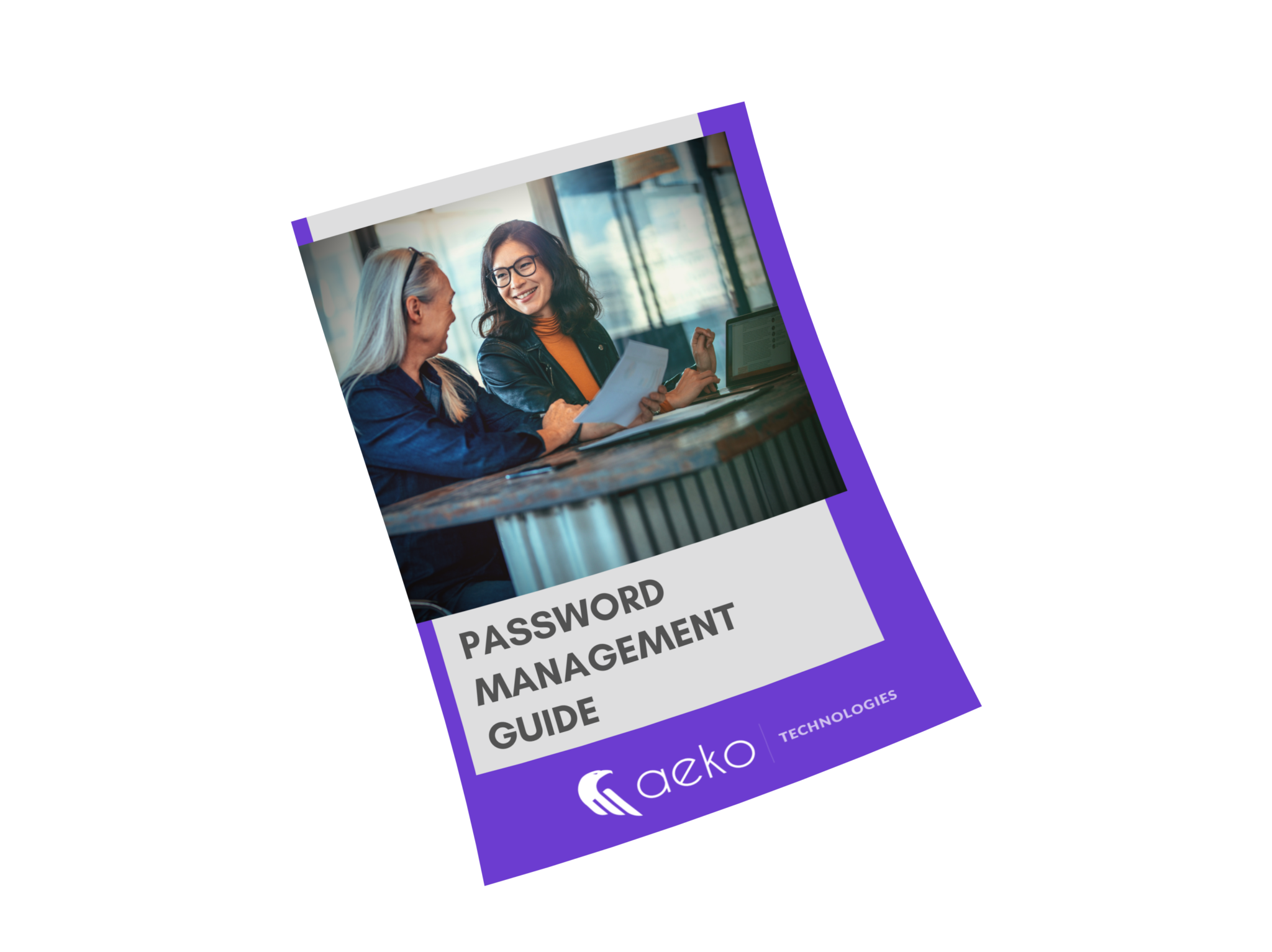Super Simple Password Management Guide
In 81 percent of hacking-related breaches, cybercriminals used stolen passwords or cracked weak passwords. Wimpy passwords are remarkably easy to come across. Using our password management guide can help. Unfortunately, most people don’t know that a 12-character password takes 62 trillion times longer to crack than a six-character password.
That’s just one quick fact about passwords: Our Super Simple Password Management Guide also helps you discover:
- How weak your passwords could be.
- How to strengthen your existing passwords.
- The ins and outs of password managers and why you should use them.
Don’t give cybercriminals a chance. Get the guide today.
Download Now
Weak Passwords Will Kill Your Business
$149,000
The average cost of a data breach for SMBs. (The ransomware average is $133,000.)
27%
The amount of how many Americans tried to guess someone’s password, 17% of which succeeded.
66 Days
The average length it takes before a cyber attack is detected.
59%
The statistical probability of people who use their name or birthdate in their password
Your Weak Passwords Aren’t the Only Thing to Be Concerned About
Cybercriminals can access your network, steal your data or disrupt your business in lots of different ways, and they keep coming up with new ones by the day.
Here are some of them:
- Drive-by: You won’t notice when this attack happens. Simply by clicking on a link or visiting a website, your system becomes infected with malware. The malware doesn’t take actions you can see, but runs in the background, siphoning data used in other forms of attack.
- Distributed denial of service (DDOS): A website, network, server or computer is targeted with the goal of taking it offline to disrupt your business.
- Man in the middle (MITM): Ever play “monkey in the middle?” In this case, hackers get between users and servers to take control. They can pretend to be you to your users or spoof your IP to access other servers or applications to harvest data.
- Phishing: These convincing-looking emails contain malicious links to fake sites or attachments designed to capture your data or infect your system. There are also variations that start with a text (smishing) or phone calls (vishing).
- Malicious software (malware): This includes ransomware, viruses, trojans, worms and other infection types.
And these are just a few examples when it comes to cybercrime methods. Hackers are always coming up with new ones. Ensure your business is well-protected with our guide.

